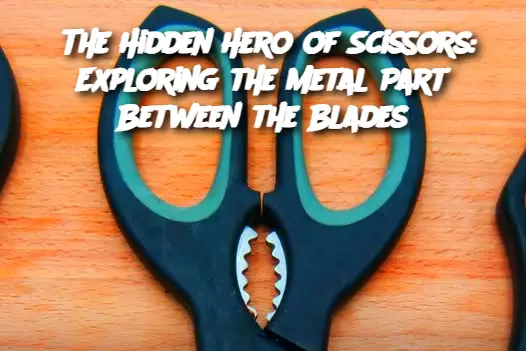ADVERTISEMENT
Introduction
When we think about scissors, we often focus on the sharp blades or the comfortable handles. However, there is an essential yet often overlooked component—the metal part between the blades. This small but crucial piece, known as the pivot screw or fastener, holds the scissors together and ensures smooth movement. In this article, we'll explore the importance of this part, its role in the functionality of scissors, and how to maintain it for optimal performance.
Understanding the Metal Part Between Scissors
The metal part between the two blades of a pair of scissors is called the pivot or fulcrum. It plays a critical role in:
Maintaining blade alignment – Ensures that the blades meet correctly for precise cutting.
Controlling tension – Adjusting the pivot tightness affects how smoothly the blades move.
Enhancing durability – A strong pivot prevents the blades from loosening or becoming misaligned over time.
The design and material of this component vary depending on the type of scissors. For example, hair-cutting scissors have an adjustable tension screw, while fabric scissors have a fixed rivet for stability.
How to Maintain the Metal Part of Scissors
Cleaning and Lubrication
Regularly wipe the pivot screw with a dry cloth to remove dust and debris.
Apply a drop of sewing machine oil or light lubricant to keep the movement smooth.
Avoid using water on the pivot, as it can lead to rust and stiffness.
Adjusting the Tension
If the blades feel too loose or too tight, adjust the screw using a small screwdriver (if applicable).
Test by cutting through a thin piece of paper—if the cut is smooth, the tension is set correctly.
Preventing Rust and Wear
Store scissors in a dry place to prevent rusting.
If rust appears, gently scrub the area with a soft cloth and a bit of white vinegar.
For high-quality scissors, consider professional sharpening services periodically.
Common Variations in Scissor Pivots
ADVERTISEMENT
